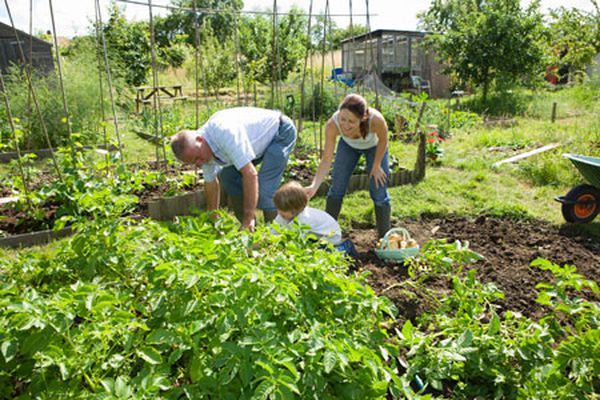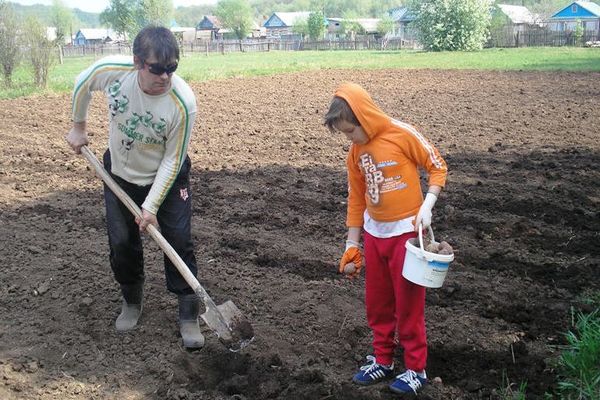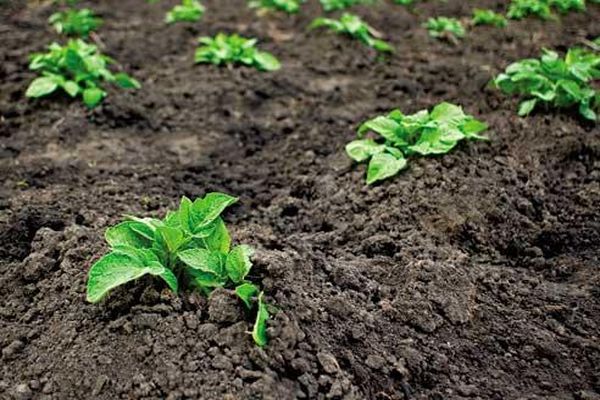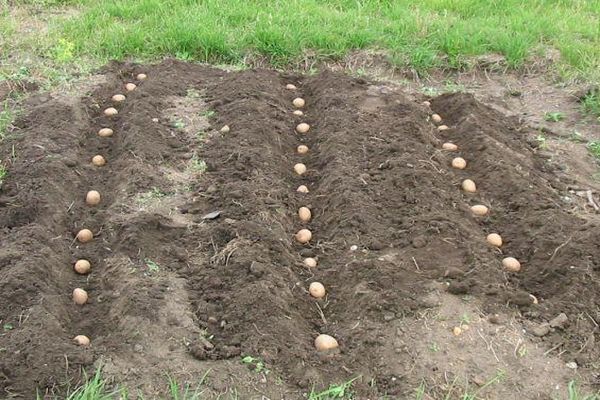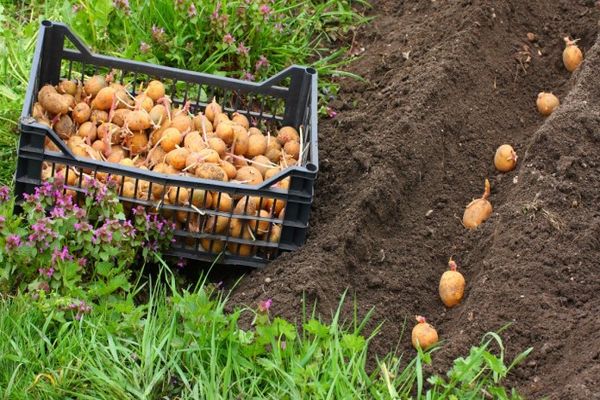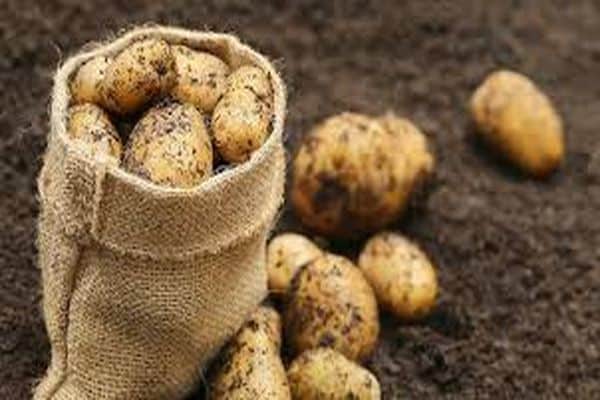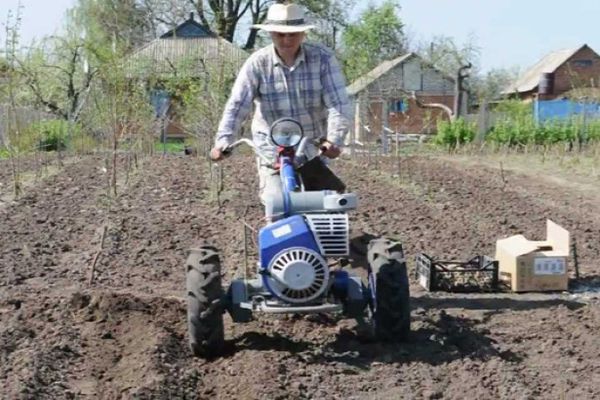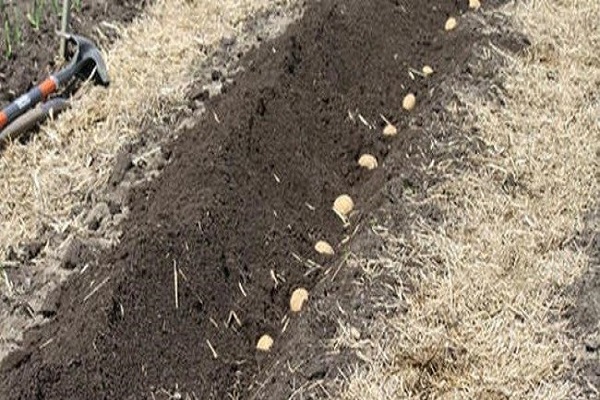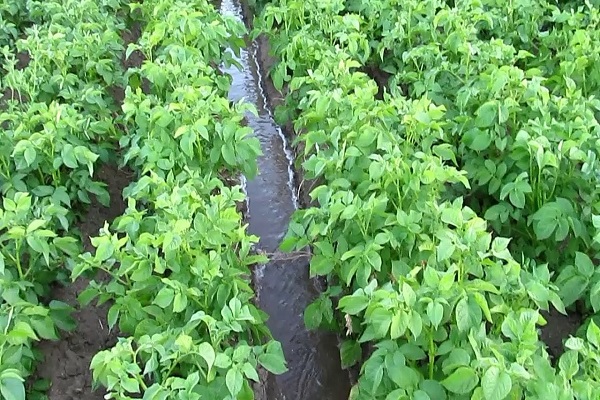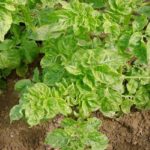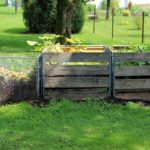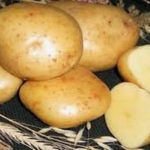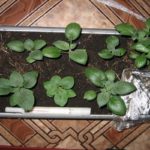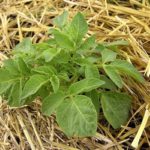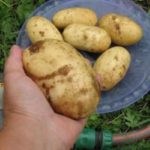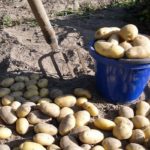Potatoes are planted in various ways. You need to choose a method that is suitable for the region and convenient for the grower himself. Determine the right time to plant a vegetable, know how to properly cultivate the land so that weeds do not appear. In this case, the potatoes will delight you with their quantity and quality.
- You need to plant potatoes correctly and then the result will be
- High-quality potato seeds are the key to a good harvest
- Getting ready to plant potatoes
- Soil and its preparation
- How to prepare seed potatoes for planting?
- What to do if the earth has not warmed up?
- It's time to board
- How and when is the best time to plant?
- How to properly cut tubers for planting?
- Disembarkation scheme
You need to plant potatoes correctly and then the result will be
You need to plant potatoes in your dacha according to all the rules. Potatoes are unpretentious to soil. It grows well both in chernozem and in loamy, sandy soils. It is best to choose flat areas of land where light can flow freely. Fertilizers will help replenish the lack of microelements in the soil.
If groundwater flows close to the surface of the earth, it is recommended to make ridges. In the raised area, holes are made in which the prepared germinated tubers are planted.
Tubers are usually planted in mid-spring, but can be planted in summer. Agronomists say that there are only positive aspects to planting potatoes in summer.
Potatoes can be grown from tubers or sprouts. As soon as the sprouts hatch from the eyes, they begin to plant them in open ground. 4–5 healthy sprouts are placed in one recess at a distance of 15 cm. The interval between such groups of sprouts should be at least 20 cm.
High-quality potato seeds are the key to a good harvest
There are different types of potatoes, which differ in different ripening periods, color and size of the tuber. Which varieties are suitable for a particular region depends largely on climatic conditions.
Early varieties begin to ripen after 65 days. Mid-early varieties will allow you to harvest in 75 days. Medium-late and late potato varieties ripen only after 100–120 days. In Russia, for example, it is best to plant potatoes of early and mid-early varieties.
When choosing seed potatoes, you need to study the characteristics of the tubers where it is recommended to grow the vegetable. The size of the seed material should be approximately 5–6 cm. The tubers should be dense, smooth, and dry. The tubers should not have any rotten spots, cracks, or cuts.
Getting ready to plant potatoes
A rich harvest is obtained only if you know the exact time when you can plant potatoes in the ground.
If you plant potatoes too early, in unheated soil, they will germinate poorly and develop slowly. This reduces immunity and increases the risk of infection.
You can’t miss favorable planting dates. Otherwise, all the moisture that the soil absorbed during the melting of the snow will evaporate. And it is very useful for plant growth.
The best period is considered to be when the top layer of soil (about 10 cm) warms up to +8. It is at this depth that the tubers are planted. Most often they start planting on May 10th. By this time, the morning severe frosts usually disappear.
Rows for planting potatoes are best placed from north to south. The distance between the rows should be about 70 cm. In each row, the distance between the holes with planting material should be at least 30–40 cm for early varieties and 45–50 cm for mid-early and late-ripening species.
Soil and its preparation
The land is prepared in advance for planting vegetables. To enrich the soil with oxygen, the soil is dug up in autumn and spring. During autumn digging, there is no need to level the area with a rake. In the fall, after digging up the ground, it is recommended to apply fertilizer. In the spring, the soil is dug up and loosened again.
Traditionally, potatoes are planted in the spring, around the beginning of May. But recently, vegetable growers began to plant even later, at the end of July, to obtain a double harvest.
The rate of potatoes intended for cultivation per hectare per hectare depends mainly on the size of the tubers. If their average weight is 50–80 g, then about 2.5 thousand tubers per 1 hectare will be required.
By mid-summer, areas are already cleared of growing early vegetables (for example, onions, lettuce), so the fertilized area is already ready. By this time, the peak activity of the Colorado potato beetle and other pests is minimized. The soil warms up well, and the development of tubers is more active, and seedlings appear faster.
Late planting of vegetables is widespread in the southern regions. To grow a late harvest in the temperate and middle zones, you need to make a number of efforts. Be sure to select a suitable variety and ensure timely and sufficient watering. Weather conditions play an important role.
Warm, not too hot weather with periodic rains will allow for a large harvest from potatoes planted in July. But most often in the middle of summer the weather is hot, so the vegetable will need to be protected from overheating of the tubers. The ideal way to combat heat is to mulch the soil.
Early varieties are best suited for summer planting of potatoes; they ripen within 50–70 days. In this case, it will be possible to harvest the crop before frost. The main thing is that the air temperature does not drop below +8 degrees.
How to prepare seed potatoes for planting?
Seed potatoes must be prepared for planting; they must be processed and germinated. Without sprouts, potatoes may not sprout. During winter storage, the tubers may deteriorate, so they need to be sorted. For sowing, leave smooth, dense tubers without damage or deformation. It is also useful to sort by size.
Selected tubers are placed in boxes with holes for ventilation and moved to a warm, bright room (air temperature about +11 degrees).
You can roughly calculate the amount of planting material.To do this, gardeners need to multiply the length of the row by their number. Then divide the resulting number by the number of eyes that predominate on the tubers selected for planting. The answer received is considered an indicator of the norm for planting potatoes per hundred square meters.
The planting rate depends on the quality of planting material and soil composition, variety, and level of agrotechnical practices. For example, for the northern regions, where chernozem soil is rarely found, the planting density is approximately 50 thousand bushes per 1 hectare. For central regions - 45–50 thousand.
What to do if the earth has not warmed up?
In the middle zone, potatoes begin to be planted at the end of April, beginning of May. You can warm up the soil yourself:
- In the spring, the beds are marked out and covered with a light-colored film.
- To speed up the melting of snow, you can scatter coal dust, which will attract the sun's rays.
- All beds can be raised by 5–7 cm. In this case, the bed dries out faster.
- Compost is considered an environmentally friendly and economical way to warm the soil. Compost warms and nourishes the soil with useful microelements.
If the ground is not warmed up, the seed material may freeze, rot, and then there will definitely be no harvest.
It's time to board
Any of the selected potato planting schemes involves marking on a plot of land.
You can plant potatoes in the usual way under a shovel. The soil is dug up in the fall and it is advisable to add fertilizer. In the spring, all that remains is to level the area and loosen large clods of earth.
Potatoes are planted in early May. By this time the earth is warming up quite well. On the prepared plot of land, rows are made at a distance of 70 cm.In each row, make shallow holes (about 10 cm) with a shovel and plant one potato with the sprout facing up. It will be useful to sprinkle compost and wood ash on top of the planting material. The soil from the next dug hole is used to bury the previous potatoes. The distance between planted tubers is about 30 cm.
Can be planted in previously prepared furrows. Dig a furrow about 19 cm wide and up to 14 cm deep. Then the tubers are distributed at a distance of 30 cm and lightly covered with earth. As the potato tops grow, soil is added and as a result a mound is formed near each bush.
The Dutch way of planting potatoes suggests making ridges up to 36 cm high. The distance between the ridges is about 70 cm. Dig holes and distribute the tuber.
On average, the potato sowing rate per hundred square meters is about 3-4 buckets of seed material, which is approximately 30-35 kg.
How and when is the best time to plant?
You can plant potatoes not only in spring. Summer planting of potatoes can be done in two main ways. The first of them is planting vegetables with tubers from last year (so that the tubers do not germinate ahead of time, they are placed in a cold place). But you can also use freshly dug tubers.
A special method has been invented for the lazy. Using this method of planting potatoes, you can reap a good harvest. There is practically no digging of soil for planting vegetables. Planting begins in early May, it is better to take early varieties. Compost is poured into the prepared rows (layer thickness is about 5 cm), tubers are placed and covered with earth.
As soon as the shoots appear, hilling is carried out, during which the shoots are again covered with earth. This will prevent frost. The second hilling is carried out when the bush reaches 20 cm.It is recommended to cover the soil with a layer of straw.
How to properly cut tubers for planting?
From the lobes of a potato tuber you can grow a full-fledged crop, rich in nutrients. Potato yield will be no different from a whole planted tuber. It doesn’t matter what size it is, the main thing is that there is room for a kidney on it. Ideally there should be two of them.
The only disadvantage of planting cut potatoes is their high susceptibility to rotting during rainy weather. To prevent this, the cuts can be treated with wood ash.
It is best to cut the planting crop in advance. Approximately 5 days before planting in the ground. Store with the cut side up in a warm room. During this time, the area will become weathered and roughened, and the buds will begin to sprout.
The work will take a lot of manual labor, but if you have to plant a couple of buckets, then you can try.
Disembarkation scheme
For any method of growing potatoes all recommendations must be followed. The distance at which potatoes should be planted depends on the growing method. Most often, the distance should not be less than 70 cm. Planting material is laid out in a row every 30 cm.
A new method is to plant potatoes smoothly under film. The place allocated for planting vegetables is dug up, fertilized in the fall and covered with black film. At a distance of 30 cm, holes are made in the film into which planting material is placed. There is no need for weeding; there is no need to hill up or water too often.
The smooth landing has similar rules to the shovel method. The only difference is that the rows are made even using markings (pegs and twine will help). Potatoes are laid out in holes and covered with soil.
The method of growing potatoes in trapezoid beds is becoming widespread. Tubers are planted on the ridge in two rows, staggered. As the bushes grow, 2–3 hillings are carried out.

